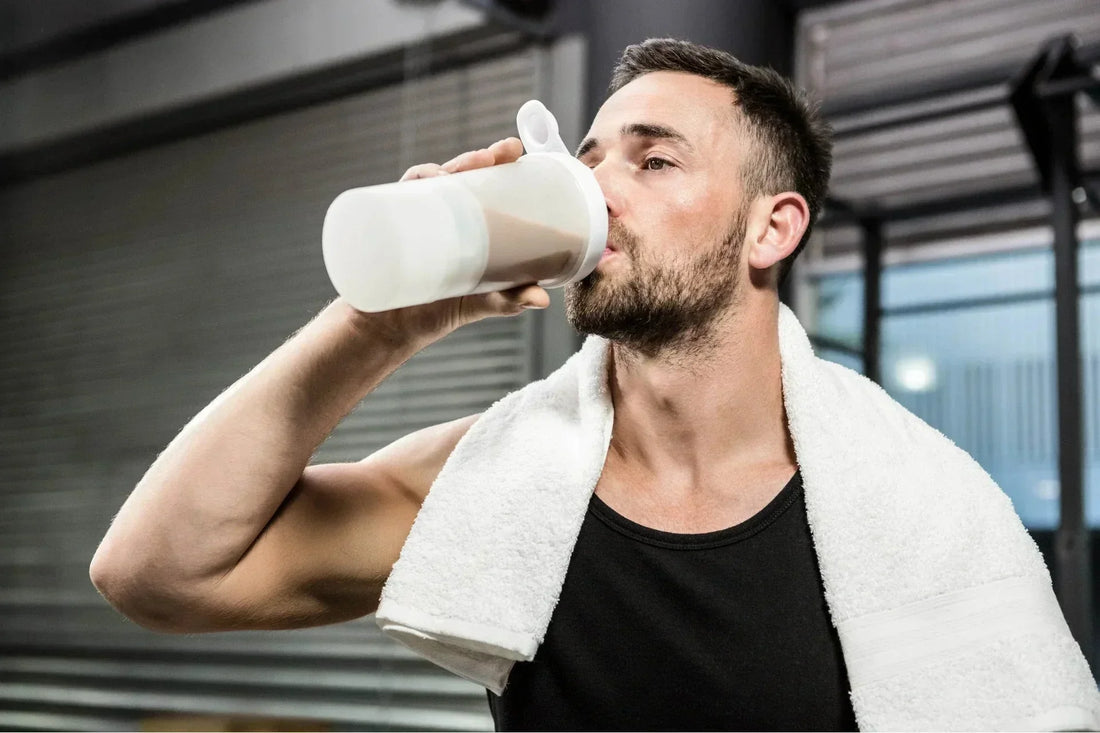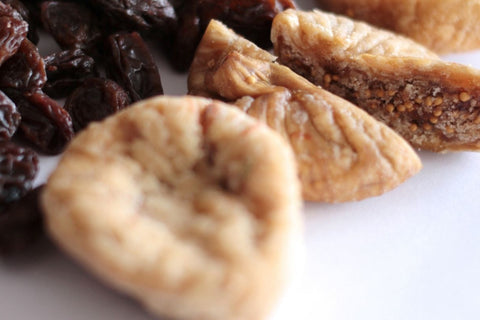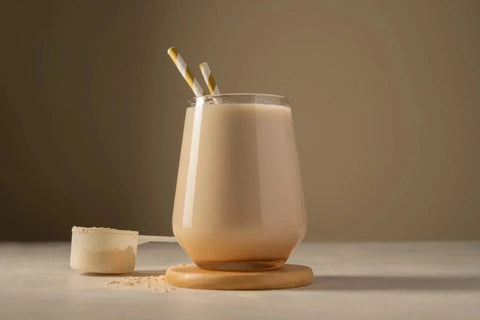What Are Protein Powders Made Of
Let’s be real, life is not as distraction free and paced out as it used to be in the yester years.
No longer can one come back from work and have a long, leisurely cardio or workout session, followed by a home cooked, protein packed meal without being tempted to crash straight on the sofa and scroll reels.
Busy schedules, long workdays, and the constant rush often make it tough to be intentional about one’s meals and plan them ahead of time.
That’s where protein powder steps in. It’s a quick, convenient way to help you meet your daily protein needs when whole foods aren’t always an option.
Maintaining energy through a hectic day, supporting muscle recovery after exercise, or just staying fuller for longer, protein powder offers a simple solution that fits into modern lifestyles.
So, how is protein powder made? What’s it made of? What are some common myths about it? Should you use it? Stick around to the answers to these questions and many more!
What Is Protein Powder Made Of?
Protein powder is really just concentrated protein extracted from various foods.
The raw materials include animal-based sources like milk and eggs, plant-based options such as peas, soy, and hemp, and even less common sources like fish or beef.
Each type has its own unique benefits and nutritional profile.
Animal-Based Proteins
Whey and casein are the most popular animal-derived proteins, both sourced from milk. Whey is the liquid byproduct of cheese production, while casein comes from the solid curds.
Egg protein powder is made by drying egg whites into a fine powder. These options are rich in essential amino acids, making them ideal for muscle repair and growth.
Plant-Based Proteins
For those avoiding dairy, plant-based powders like pea, soy, hemp, and brown rice are excellent alternatives.
These are created by grinding the plants and isolating the protein from starch and fiber.
While not all plant proteins are “complete” (containing all nine essential amino acids), combining multiple sources can fill the gaps.
Nutritional Components
Protein powders typically pack 20-30 grams of protein per serving, along with varying amounts of carbohydrates (often fiber) and fats.
Some may also include added micronutrients like calcium or potassium for extra health benefits.
In short, whether you’re sipping whey or blending pea protein into your smoothie, these powders are designed to give your body the building blocks it needs to thrive without the hassle of cooking!
Myths and Truths about Protein Powder

There are quite a few myths floating around about protein powder, so let’s set the record straight.
1. Protein Powder is Only for Bodybuilders
This is one of the most common ones.
In reality, anyone who wants to increase their protein intake-whether for convenience, dietary restrictions, or lifestyle reasons can benefit from it.
2. Protein Powder is Unnatural or Harmful.
The truth is, it’s simply concentrated protein derived from foods like milk, eggs, or plants; as with any food product, quality matters, so it’s best to choose options with minimal additives from reputable brands.
3. Plant Protein is Ineffective
Some people also believe that plant proteins are incomplete and less effective, but many plant-based protein powders combine different sources to provide a full spectrum of essential amino acids, making them just as effective as animal-based options.
4. Risk of Kidney Damage
There's also a persistent belief that protein will damage healthy kidneys. Yes, consuming anything over the prescribed limit is bound to have consequences, but largely, moderate protein intake is safe for most people, and only those with pre-existing kidney conditions need to be cautious.
5. Protein Powder is a Steroid
It’s not. Protein powder is simply a food supplement and contains no hormones or steroids.
Who Should Avoid Protein Powder?
1. People with kidney disease: Extra protein can worsen kidney function.
2. Those with allergies or intolerances: Read labels for potential allergens.
3. Pregnant or breastfeeding women: Most supplements aren’t well-studied for safety in these groups.
4. Anyone already meeting protein needs through food: Whole foods provide additional nutrients that powders lack.
How Protein Powder Is Made: The Manufacturing Process
Ever wondered what goes into making that scoop of protein powder you toss into your smoothie?
Let’s break it down for you!
Animal-Based Proteins (Whey and Casein)
Protein powders like whey and casein start their journey from milk, which naturally contains about 80% casein and 20% whey. Here’s how they’re made:
1. Milk Pasteurization and Curd Separation: Fresh milk is pasteurized to kill harmful bacteria. Enzymes are then added to separate the milk into curds (solid) and whey (liquid).
The curds are used for cheese, while the liquid whey moves on to become protein powder.
2. Whey Extraction and Filtration: The liquid whey undergoes filtration processes like microfiltration or ultrafiltration to remove fats, lactose, and water.
This step concentrates the protein while preserving its nutritional value. For whey protein isolate (WPI), an additional ultrafiltration step removes nearly all remaining fats and carbohydrates.
3. Spray Drying: The purified whey liquid is spray-dried into a fine powder. This involves atomizing the liquid into a mist and exposing it to hot air, which evaporates the water, leaving behind a protein-rich powder.
Casein follows a similar process but is extracted differently.
Enzymes or acids are used to coagulate the casein, which is then washed, dried, and ground into powder. Casein’s slow-digesting properties make it a favorite for overnight recovery.
Plant-Based Proteins
For those avoiding dairy, plant-based proteins like pea and soy are excellent alternatives. Here’s how they’re made:
1. Grinding Raw Materials: Plants like peas or soybeans are cleaned, dehulled (outer shells removed), and ground into flour.
This flour contains protein along with starches and fibers.
2. Protein Separation: The flour is mixed with water to create a slurry. Using methods like wet filtration or centrifugation, the protein is separated from the starches and fibers.
For pea protein, this often involves adjusting the pH to precipitate the protein at its isoelectric point (where it clumps together).
3. Purification: The separated protein undergoes further purification steps to increase its concentration. This can include washing or additional filtration processes.
4. Drying: Like whey, plant-based proteins are also spray-dried into a fine powder. This ensures a stable product with minimal moisture content.
Both types of protein powders may go through additional steps like flavoring or fortification with vitamins and minerals before being packaged for sale.
Benefits of Protein Powder
Protein powder isn’t just for bodybuilders, it’s a versatile supplement that can benefit almost anyone looking to improve their health or fitness routine.
Let’s dive into why it’s such a popular choice:
Muscle Growth and Repair
Protein is the MVP when it comes to building and repairing muscles.
After a workout, your muscles need amino acids to recover and grow stronger.
Protein powders, especially those rich in complete proteins like whey or soy, deliver these essential nutrients quickly and efficiently.
Whether you’re lifting weights or running marathons, protein powder can help you bounce back faster.
Convenience in Meeting Daily Protein Requirements
Let’s face it, prepping meals with enough protein every day can be a hassle. Protein powder swoops in as the ultimate time-saver.
Just scoop, shake, and sip! It’s perfect for busy mornings, post-workout refueling, or even as a snack when hunger strikes.
Plus, it’s portable, making it easy to stay on track no matter where you are.
Suitability for Different Dietary Needs
Whether you’re vegan, lactose-intolerant, or following a keto diet, there’s a protein powder for you.
With options like plant-based powders (pea, hemp) and low-carb isolates, everyone can find a blend that fits their lifestyle.
Fuel Your Body, Snack Smarter with 100 Cal Snacks

While protein powder is a super handy way to get your protein in, relying solely on it isn’t practical or enjoyable for most people.
You can’t (and shouldn’t) have a protein shake for every meal and snack. Your body needs variety and nutrients from regular meals and snacks too.
That’s why it’s important to look at protein powder as just one tool in your nutrition toolkit. There are plenty of other tasty, balanced ways to boost your protein intake throughout the day.
That’s where we, 100 Cal Snacks, come in! Our Chocolate Protein Bars, BBQ Protein Puffs, and Peanut-Butter Protein Bars pack all the benefits of protein powder into delicious, portable snacks.
Packed with high quality plant and milk protein, low in carbs, keto-friendly, made with gut-friendly ingredients, and just 100 calories per serving, they’re a smart fit for anyone with a busy lifestyle.
The irresistible textures and decadent flavors pull you in, and the clean, gut healing nutrition makes you want to come back again and again.
Explore our 100 calorie snacks range of high-protein snacks today and experience the attraction yourself, because fueling your body right should feel effortlessly magnetic.




